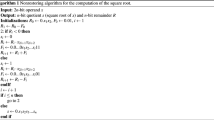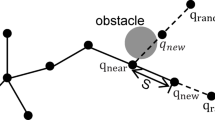Abstract
SOME mathematical problems can be expressed in terms of threading mazes: we are given a non-oriented linear graph (notes and branches) and wish to find a path from a node A to a node B, where A corresponds to the premises and B to the conclusions of some theorem1,2. As is well known, it is likely to be more economical to “work from both ends”, that is, from both A and B, rather than from A alone. For many years I have been remarking that the saving in work by this “two-ended” method is likely to be given approximately by a square root law. By this I mean that if the number of steps used when threading the maze from one end is S, then the number used when working from both ends is liable to be of the order of the square root of S. These estimates, S and √S, are both intended to be expected values, and the result is true only if the maze is very difficult to thread, so that the shortest path from A to B is long and consists of far fewer than S steps. The condition that the maze is difficult is to be interpreted in the sense that there is not at first much indication of whether we are going in the right direction, that is, there is at first no very useful estimate of “distance”. We can define the distance from A to B as the number of steps required to get from A to B along the shortest path, but we have no quick and effective method of telling when we are making steps that decrease the distance, when A and B are far apart.
This is a preview of subscription content, access via your institution
Access options
Subscribe to this journal
Receive 51 print issues and online access
$199.00 per year
only $3.90 per issue
Buy this article
- Purchase on SpringerLink
- Instant access to full article PDF
Prices may be subject to local taxes which are calculated during checkout
Similar content being viewed by others
References
Newell, A., Shaw, J. C., and Simon, H. A., in Self-Organizing Systems (edit. by Yovits and Cameron), 153 (Pergamon, 1960).
Doran, J. E., and Michie, D., Proc. Roy. Soc., A, 294, 235 (1966).
See, for example, Berge, Claude, Théorie des Graphes et ses Applications, 65 (Dunod, Paris, 1958).
Author information
Authors and Affiliations
Rights and permissions
About this article
Cite this article
GOOD, I. Square-root Law for Solving Two-ended Problems. Nature 212, 1280 (1966). https://doi.org/10.1038/2121280a0
Published:
Issue date:
DOI: https://doi.org/10.1038/2121280a0



